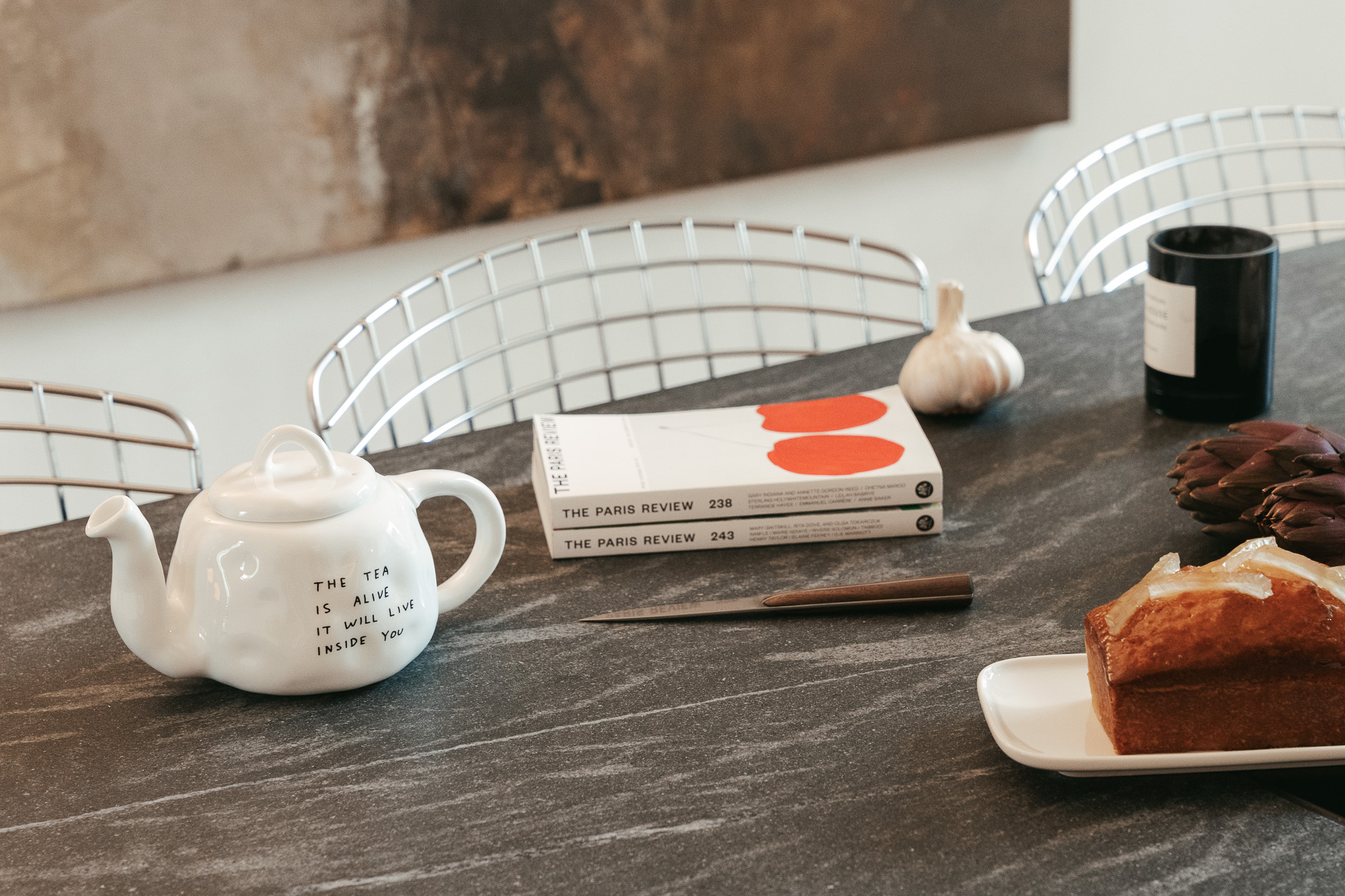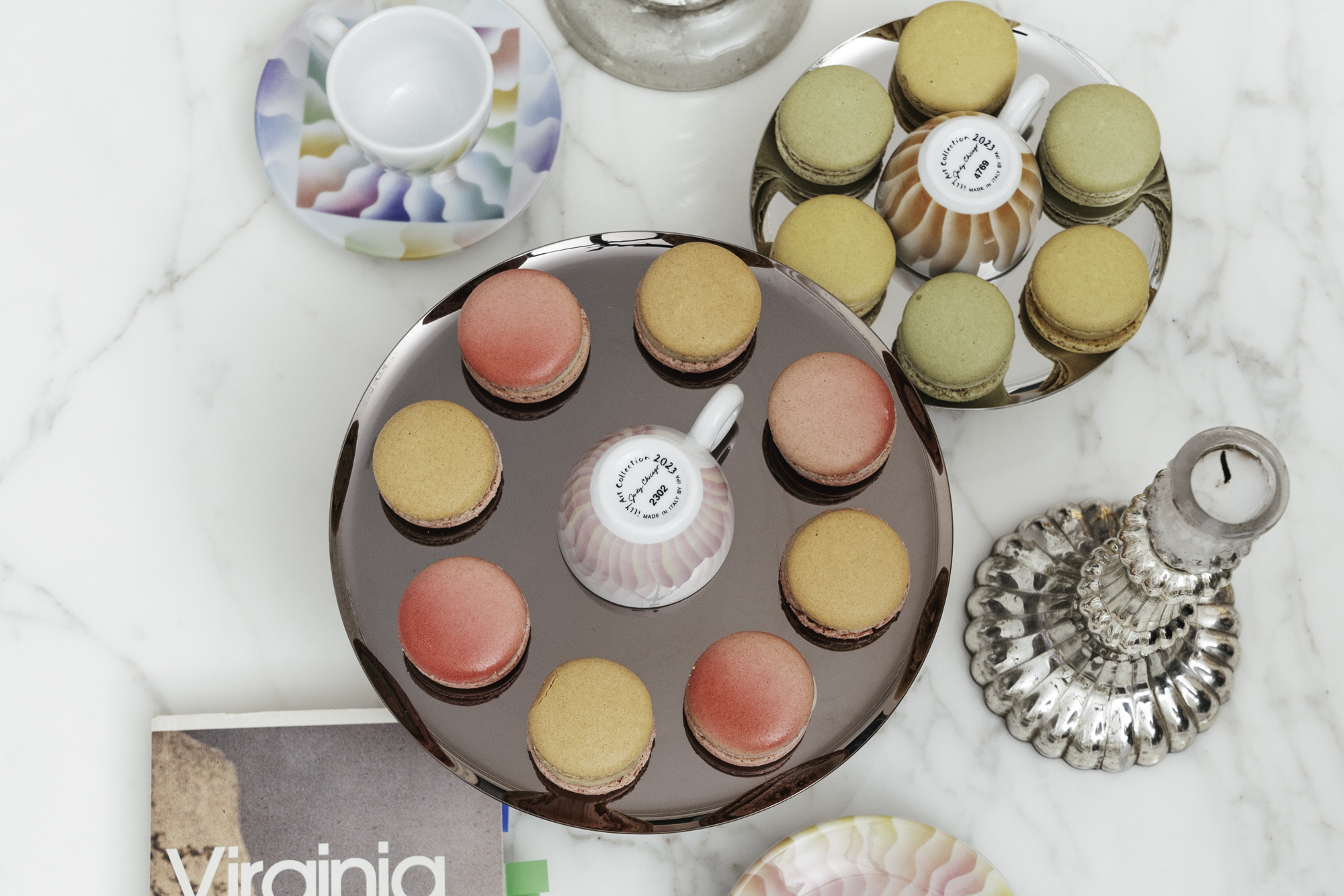
HOW DO OBJECTS “SPEAK” TO US?
Aimee Dawson on art’s unexpected connections
Ever felt a strange compulsion to buy something beautiful? The answer may lie in its hidden meaning.
COLLECT TODAY FOR A JOYFUL TOMORROW
COLLECT TODAY FOR A JOYFUL TOMORROW

In 1934, the American philosopher John Dewey remarked on how our sense of value of objects had changed. “Domestic utensils, furnishings of tent and house, rugs, mats, jars, pots, bows, spears, were wrought with such delighted care that today we hunt them out and give them places of honour in our art museums. Yet in their own time and place, such things were enhancements of the processes of everyday life,” he wrote in his treatise Art as Experience. This attitude towards objects continues today: in our time of supreme consumption and hyper-production, everyday objects have often been realised as inherently common, thus disposable. The artefacts of our quotidian routine are barely durable enough for stewardship, nor dignified to the minders and keepers of the mundane. Meanwhile, crafts of the past continue to be hunted for prized private collections and posted on social media for others to coo over and covet.
"What I’m trying to do is to remind people to forget that it’s art and think about it as life"
Christian Boltanski, Artist
But the impulse of artists to situate art within the context of the everyday—however that‘s expressed—is inherent to the practice of art making. As the contemporary artist Christian Boltanski said in 2016: “What I’m trying to do is to remind people to forget that it’s art and think about it as life.“ Was that not also what Salvador Dalí proffered in his allegorical mode—“I do not understand why, when I ask for grilled lobster in a restaurant, I am never served cooked telephone”—collapsing the idea that art and life are one and the same? That fuelled Dalí to render functional objects through an absurdist lens, such as four editions of the iconic Lobster Telephone (1938) or the Mae West Lips sofa (1937).
Thus, creative production has taken all forms; and the art history of artists making functional objects, particularly ones designated as commercial and made using mass-produced techniques and widely available materials (think: ceramics, textiles, rugs, lamps) is long. So long in fact that it’s tied to the origins of art history as a discipline, in the Italian Renaissance. Around the time that the Italian painter and architect Giorgio Vasari scribed biographies of the European “greats”, thus formalising art’s field of study, Leonardo da Vinci engaged in his scientific and artistic experiments that led to mechanical objects, which ultimately served a purpose beyond just an artful inquiry. Da Vinci paved the way for cars, helicopters and even the bicycle, lest we forget.
Art history as a discipline tightly defines what art is and artists do, which ultimately has even pushed dialogue towards a strictly canonical. Categorical classification is what has defined a taxonomy of art separate from artist-made objects. Yet, artists have been keenly aware of these critical constraints imposed upon them. For example, in the 19th century a wave of resistance rolled in, whether in France, where the watershed Salon des Refusés of 1863 saw Édouard Manet, Gustave Courbet, Emile Zola et al of the Parisian scene thumb their noses at Emperor Napoleon III by staging an exhibition of works that had been rejected by the Académie des Beaux-Arts; or in England, where the Arts and Crafts movement was championed by the designer William Morris and the critic John Ruskin to challenge these impenetrable formal lines of art versus function.
€20.00
€185.00
€360.00
Instead, what has shifted is critical protocol. Critique, whether in the academy or printed publication, is, as the French sociologist Pierre Bourdieu puts it in The Forms of Capital (1986), “the academic qualification, a certificate of cultural competence”. Critique has served not just as a tool for contextual understanding but simultaneously as a gatekeeper to protect the social and economic value of art, which explains the societal impulse to protect its stature.
Which then begs the question, do artists care about all that? No, frankly, if the 20th and 21st centuries have revealed anything. Picasso slung ceramics, Warhol made merch, and powerbroker of American Minimalism, Donald Judd, who defined his own practice as “object-making”, free from any formal qualifiers, wrote: “Art and architecture—all the arts—do not have to exist in isolation… A work of art exists as itself; a chair exists as a chair itself. And the idea of a chair isn’t a chair.” That has ruptured the institutional and commercial spaces to support the rise of object-based practitioners—from Richard Artschwager to the Haas Brothers to Nicola L—in having a museum presence, as much as countless critically-beloved artists like Jeff Koons, Kara Walker or Pedro Reyes to engage in commercial object-based extensions that possess both similar social and economic value within culture as their fine art pieces.
Does that then equate Roy Lichtenstein’s Brushstroke Chair and Ottoman (1986-88) to Dewey’s “furnishings of tent and house”? That may forever remain in debate. Still, in a moment where creation overrides critique, artists have made the case that art is everyday life, thus the valued objects of our times.
JULIE BAUMGARDNER is a writer and editor covering areas of art, design, travel, and all things cultural. Her work has been featured in Bloomberg, Financial Times, Fodor’s, New York Magazine, the New York Times, Wall Street Journal, and many other publications.

Ever felt a strange compulsion to buy something beautiful? The answer may lie in its hidden meaning.

It sounds so simple. Mix the old with new. Done well, it looks effortless. But the bad examples—laboured, jarring—show what a skill it is to create harmonious yet unexpected juxtapositions.

Learn about the latest drops and get exclusive offers straight to your inbox.

Please submit your question, enquiry or insight into the very nature of art itself in the form below.
Effective Date: 1 October 2024
ArtAsLife.com (“we”, “us”, “our”) is committed to protecting and respecting your privacy. This Privacy Policy explains how we collect, use, and protect your personal information when you visit and interact with our website, ArtAsLife.com, especially during its pre-launch “coming soon” phase. This policy is designed to comply with the General Data Protection Regulation (GDPR) and other applicable laws.
1. Information We Collect
During the “coming soon” phase, we collect minimal personal data, primarily for communication and marketing purposes. The types of personal information we may collect include:
2. How We Use Your Information
We collect and process personal data for the following purposes:
3. Legal Basis for Processing Your Information
We only process personal data when we have a lawful basis to do so under GDPR:
4. How We Share Your Data
We do not sell or rent your personal data to third parties. However, we may share your information with trusted third-party services under certain conditions:
5. Data Retention
We retain your personal data only for as long as necessary to fulfill the purposes we collected it for, including for the purposes of satisfying any legal, accounting, or reporting requirements.
6. Your Rights Under GDPR
Under GDPR, you have the following rights concerning your personal data:
To exercise these rights, please contact us at info@artaslife.com.
7. Cookies and Tracking Technologies
We use cookies and similar tracking technologies to enhance your experience on our website. You can manage your cookie preferences via your browser settings.
8. Data Security
We are committed to ensuring that your information is secure. We use a range of technical and organizational measures to safeguard your personal data and prevent unauthorized access, disclosure, or modification.
9. Third-Party Links
Our website may contain links to other websites of interest. However, once you have used these links to leave our site, please note that we do not have control over these external websites. We encourage you to review the privacy policies of these third-party sites before providing any personal information.
10. Children’s Privacy
ArtAsLife.com is not intended for use by children under the age of 16. We do not knowingly collect personal information from children. If you believe that a child has provided us with personal data, please contact us, and we will delete such information immediately.
11. Changes to this Privacy Policy
We reserve the right to modify this Privacy Policy at any time. Any changes will be posted on this page with the updated “Effective Date”. We encourage you to review this page periodically to stay informed about how we are protecting your data.
12. Contact Us
If you have any questions or concerns regarding this Privacy Policy or our data practices, please contact us at:
Email: info@artaslife.com
By using our website, you agree to the collection and use of information in accordance with this Privacy Policy.